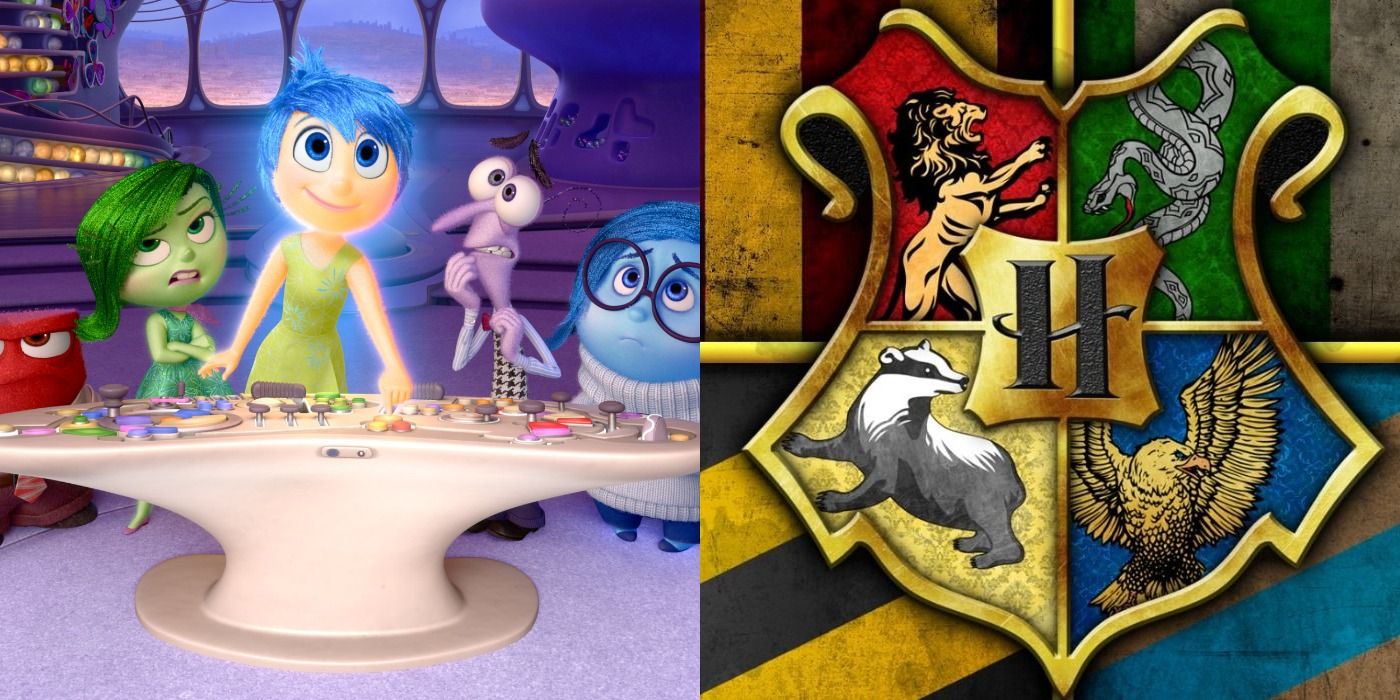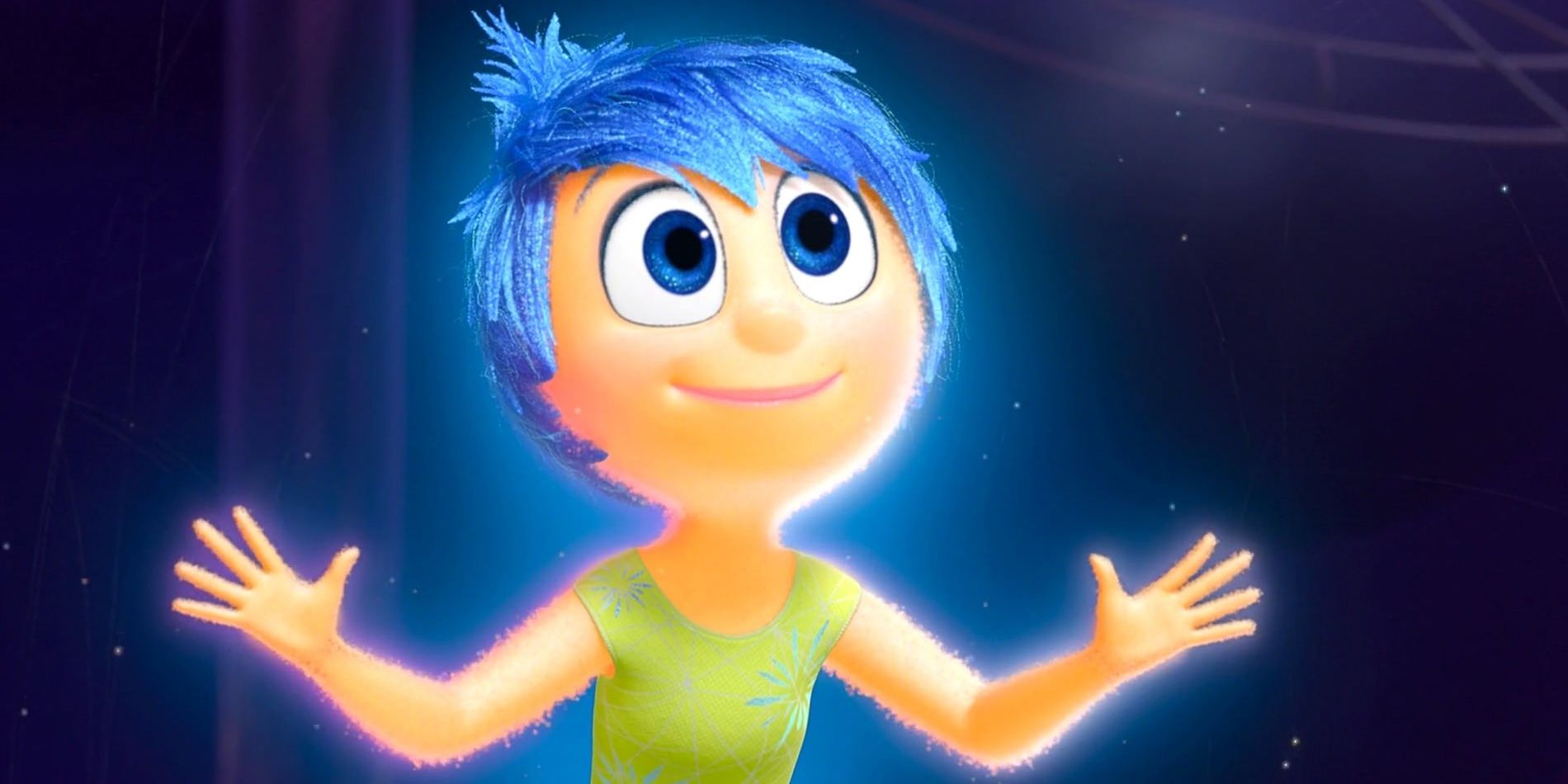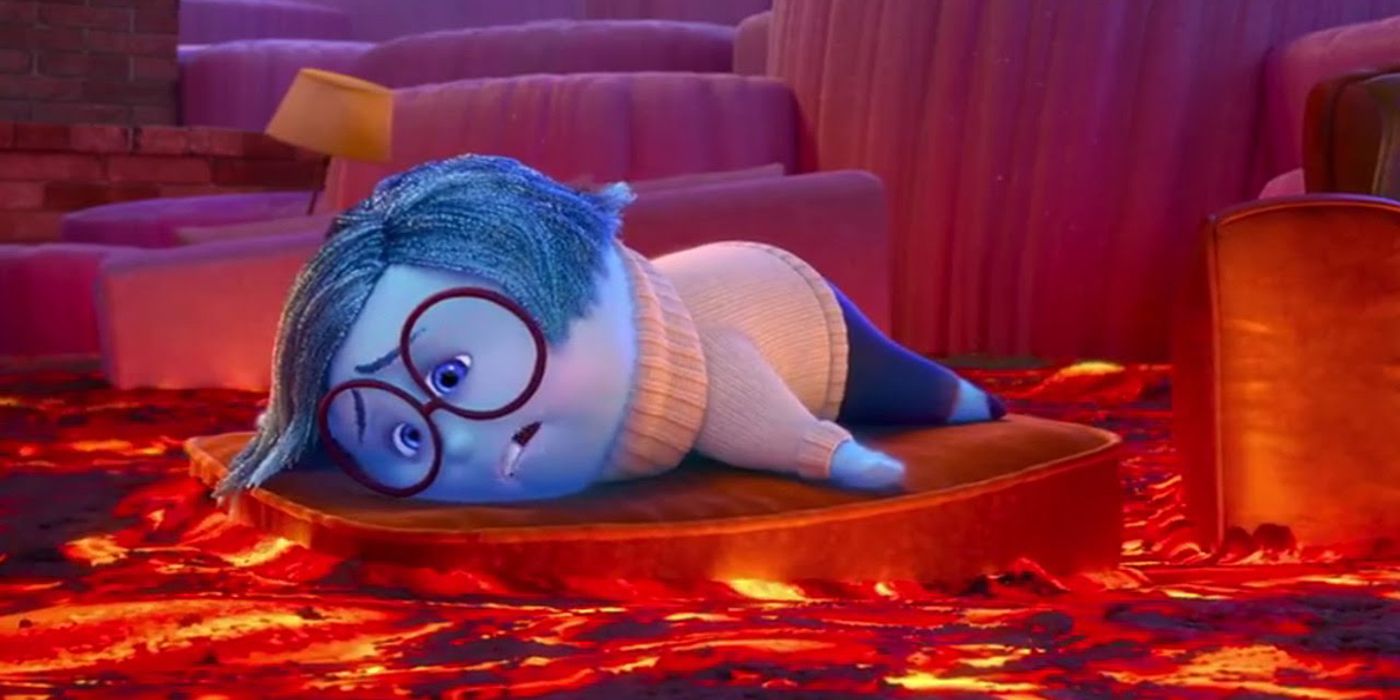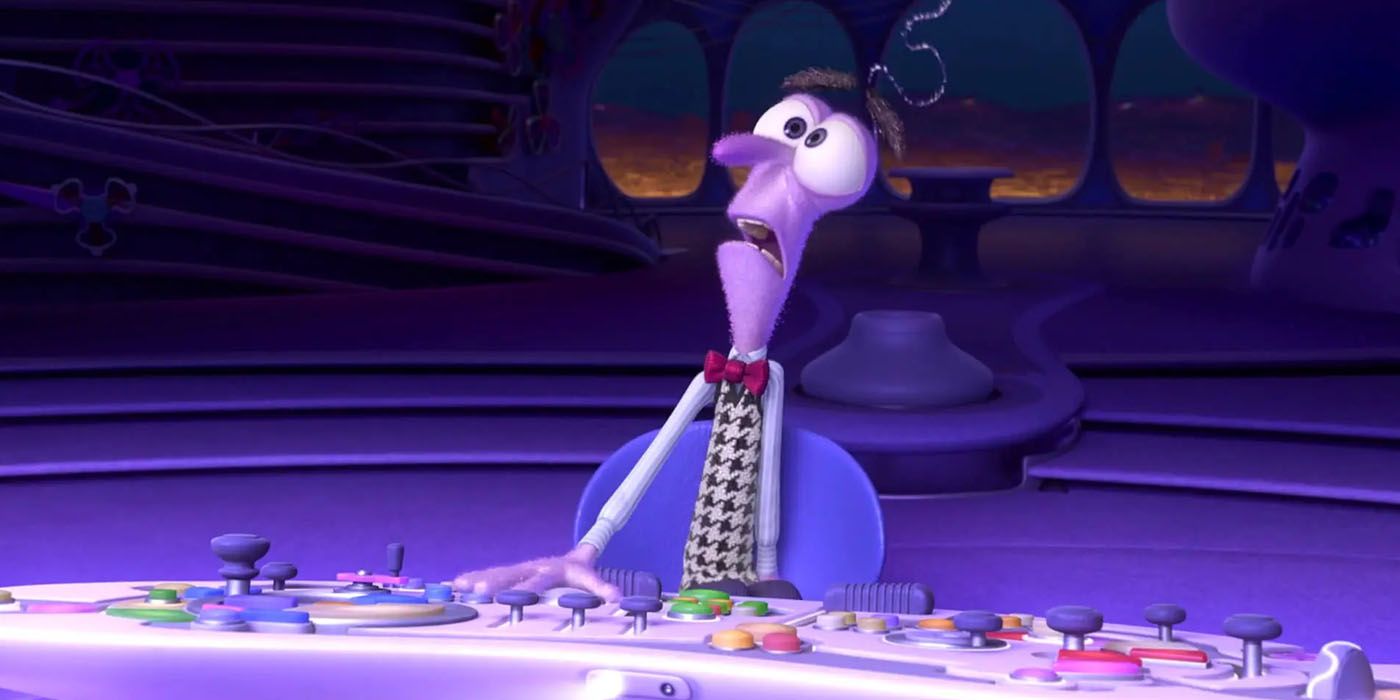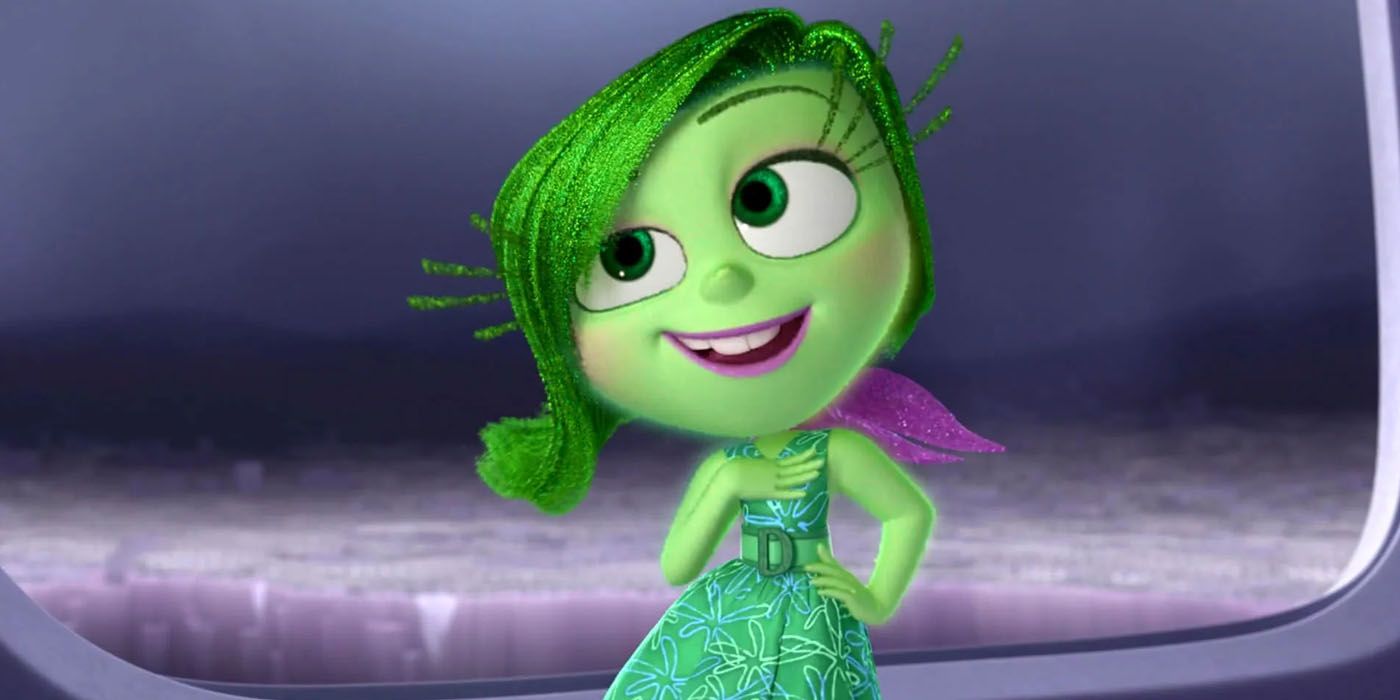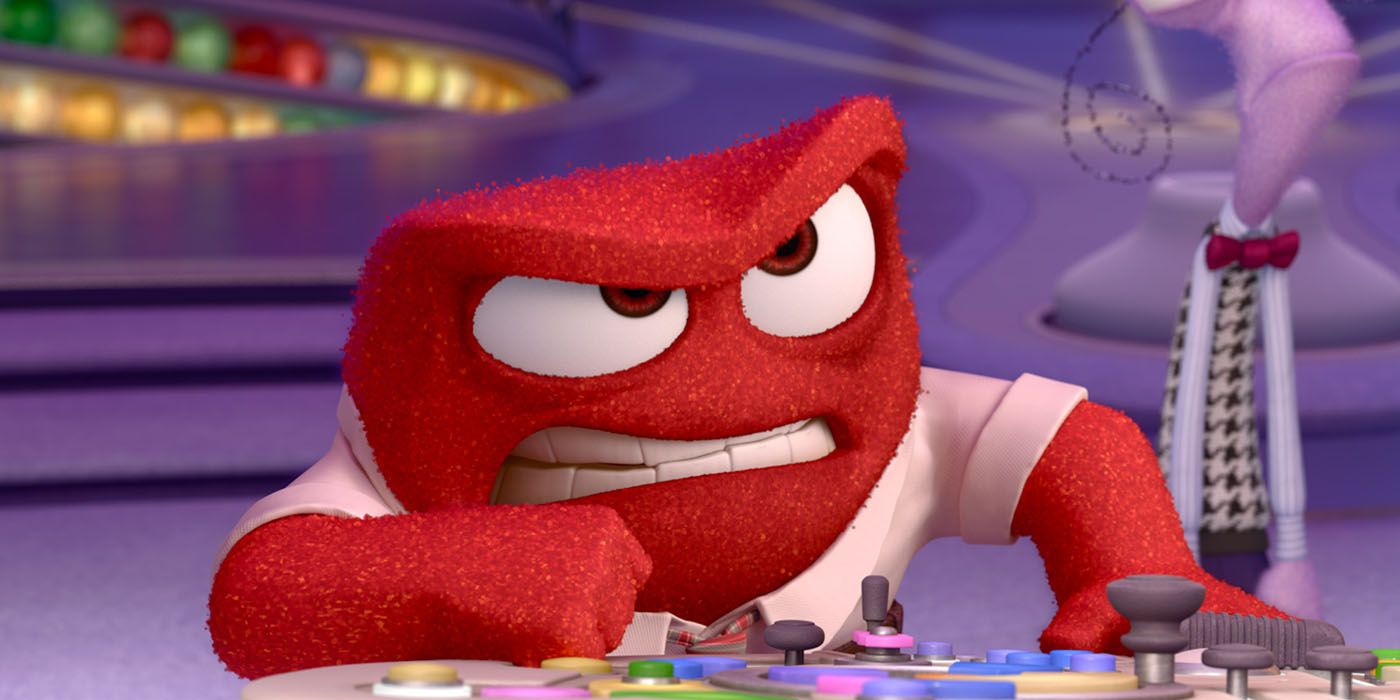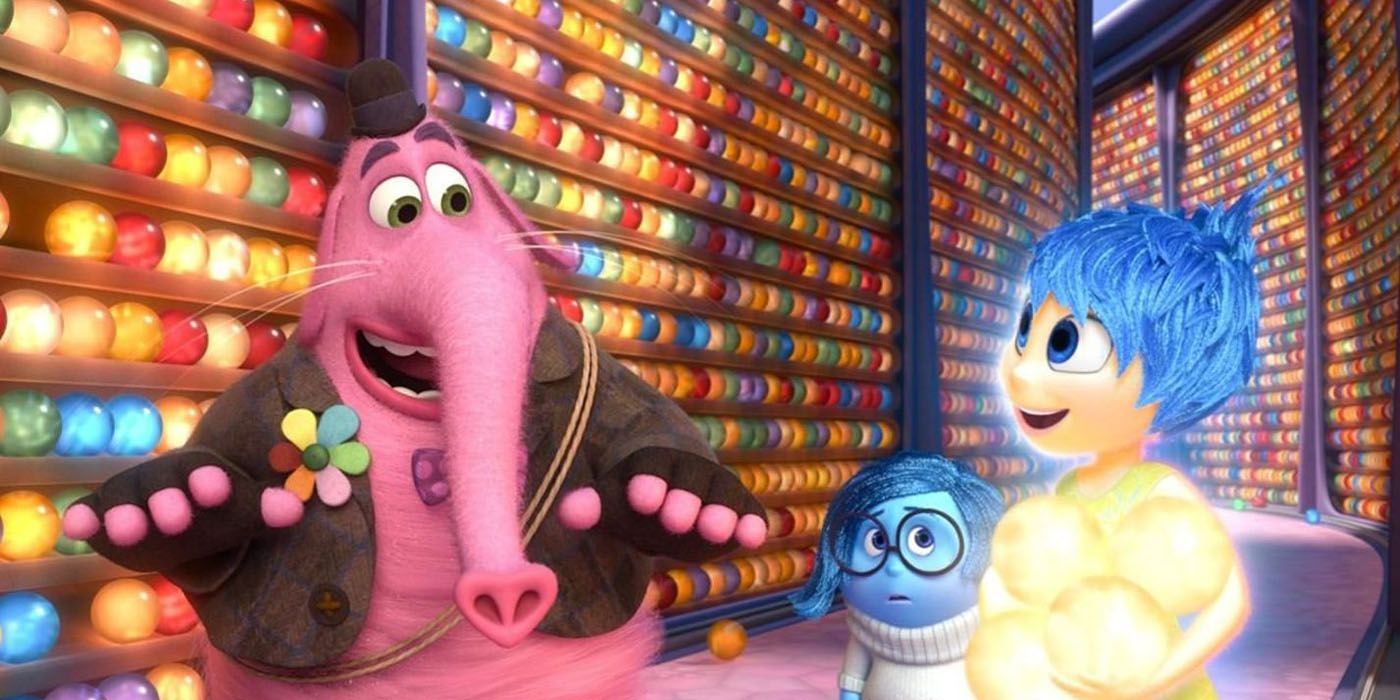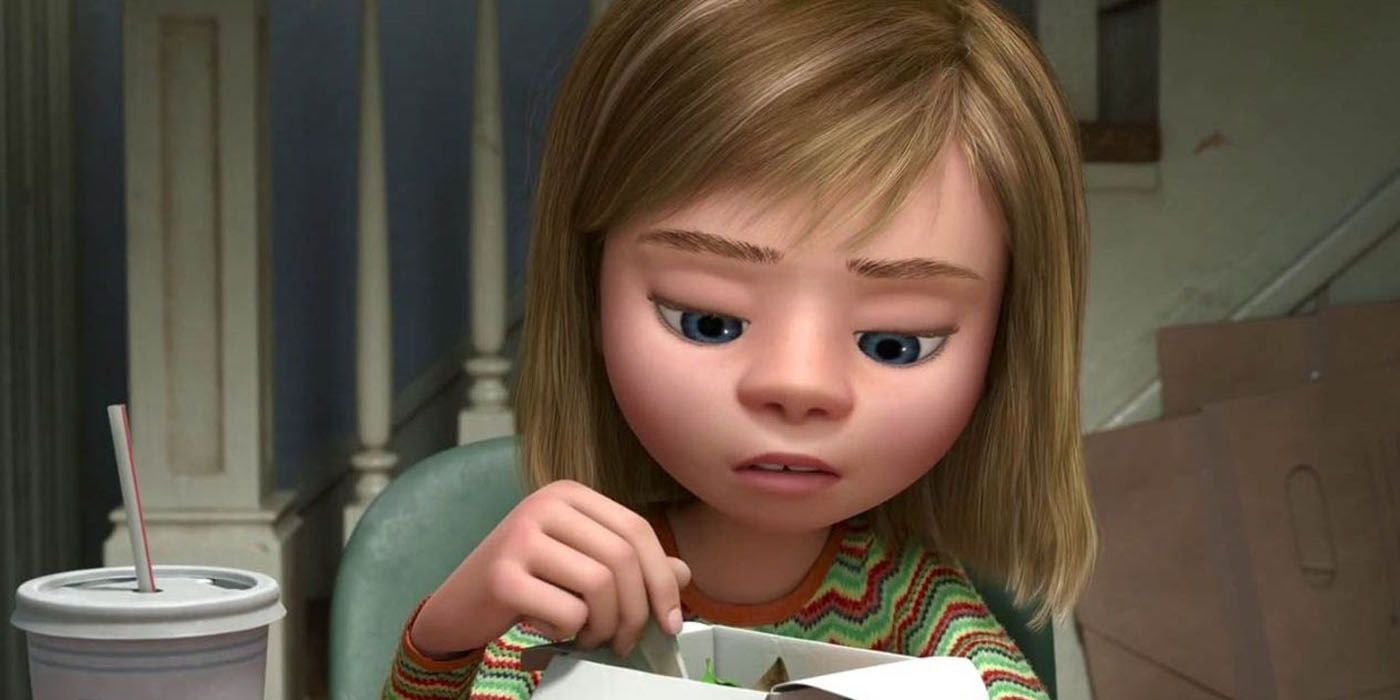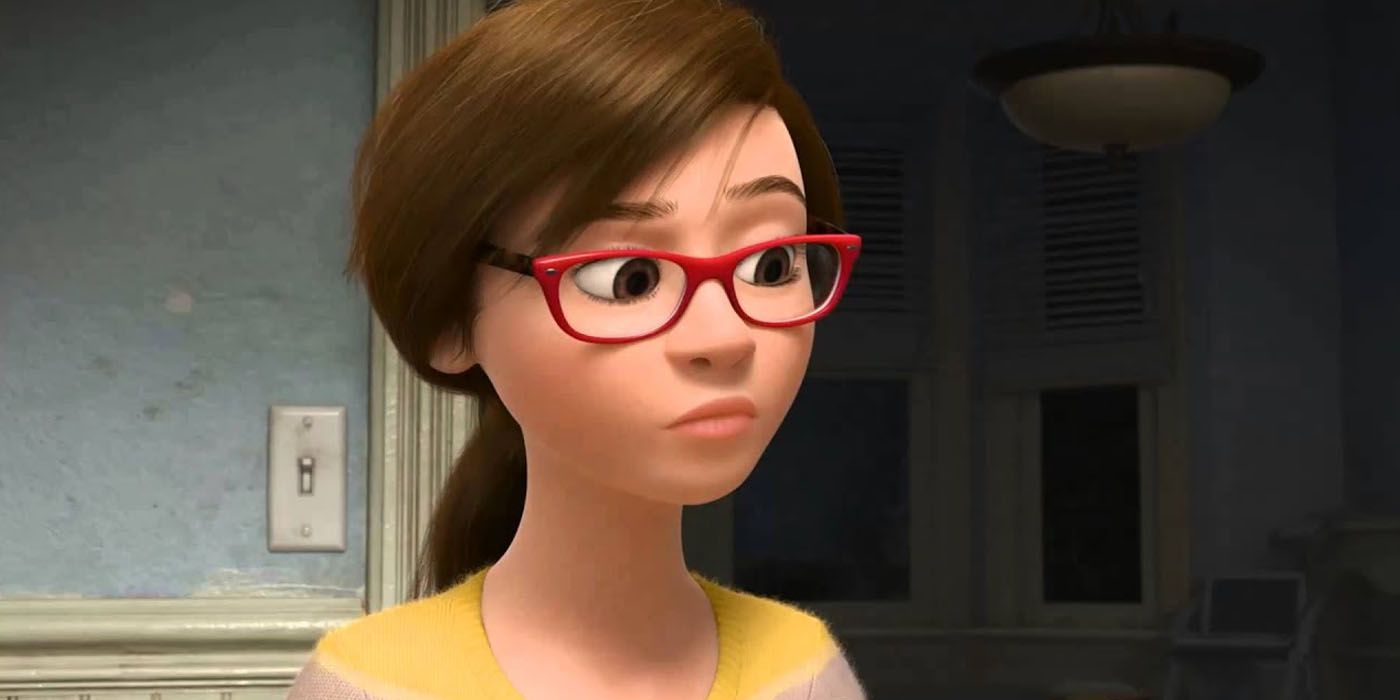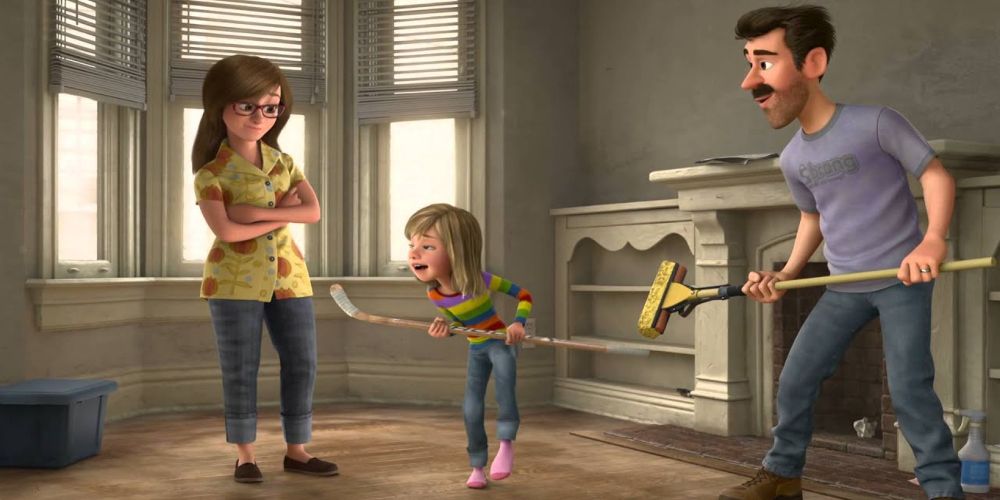Released in 2015, Pixar's Inside Out was well received by both critics and viewers for its positive messages about mental wellbeing, a heartfelt story with moments of humor, and excellent characterization. The movie focuses on eleven-year-old Riley as she copes with moving to a new home, and it's told mainly from the perspective of her five core emotions that reside in her mind.
Although they are technically from the same being, the five emotions - Joy, Sadness, Anger, Fear, and Disgust - are all unique characters in their own right, each with different personalities. With this in mind, it is fair to say that each of these emotions, and the other main characters in the movie, would be sorted into different Hogwarts houses if they were in the world of Harry Potter.
Joy: Gryffindor
Yellow pixie-like Joy is the leader of the emotions, voiced by Amy Poehler in one of her best roles, according to IMDb. Living up to her name, she is optimistic and bright and always on hand to make sure that Riley is happy and living her best life. Unfortunately, this sometimes meant Joy taking too much control and not allowing Riley to express anything other than happiness.
Joy is passionate and playful, always looking for her and Riley to have fun together. These qualities, along with her leadership skills, make her a perfect addition to Gryffindor. But she is also stubborn in regards to the other emotions taking charge, especially Sadness, which can also be associated with Gryffindor.
Sadness: Ravenclaw
The deuteragonist of Inside Out is Sadness, the second core emotion to appear. On first impression, Sadness is hilariously gloomy yet somewhat relatable. But she proves to be of a lot more value than anticipated, and it is ultimately Sadness that sets things right.
Underneath the melancholy, Sadness proves to be one of the smartest characters in the movie, making her a perfect fit for Ravenclaw. One example is that Sadness realizes that a nightmare is more effective to wake up Riley than a happy dream. She is also curious and observant, qualities also favored by Ravenclaw. What's more, Sadness' main color is blue, which is Ravenclaw's signature color.
Fear: Hufflepuff
Fear is the third core emotion and, true to his name, is neurotic, nervous, and highly strung. As perhaps the physically weakest emotion, Fear is prone to be overpowered by the stronger emotions (most notably Anger) but it is he that keeps Riley from making brash decisions.
Although he is cowardly, Fear is loyal to Riley and the other emotions, a trait highly valued by those in Hufflepuff. Fear also demonstrates the Hufflepuff quality of diligence - he is constantly alert for any potential threats that could harm Riley, whether it's tripping or a nightmarish clown.
Disgust: Slytherin
With high standards and expectations of everyone around her, be it Riley or the other emotions, Disgust is opinionated and picky. But she is also honest, has a good heart, and is willing to look out for and protect Riley.
As well as being its trademark color, Disgust demonstrates the Slytherin qualities of self-preservation and being something of a perfectionist. On Riley's first day at her new school, it is Disgust who makes sure she looks her best and is able to fit in with her new classmates. Another Slytherin trait she demonstrates is intelligence, by driving Anger to explode so she can rescue Joy and Sadness.
Anger: Gryffindor
Prone to bursting into flames of temper, Anger is the main comic relief out of the emotions. Because he often thinks with his emotions rather than logic, Anger has made Riley make some poor decisions, the worst being making Riley decide to run away from home.
Anger is the ideal fit for Gryffindor due to his fearlessness in decision-making and his passionate side. What's more, Anger is stubborn and will often not let anything stand in his way, be it not getting dessert or being sent to her room, which is a trait most associated with Gryffindor.
Bing Bong: Hufflepuff
Part cat, part elephant, and made from cotton candy, Bing Bong is Riley's long-forgotten imaginary friend who helps Joy and Sadness to get back to HQ. Although a bit scatterbrained, Bing Bong ultimately wants what's best for Riley and makes the ultimate sacrifice in order for Joy to return safely. His sacrifice is one of the saddest moments in Inside Out.
Bing Bong's dependability, kind nature, and loyalty to Riley make him the ideal Hufflepuff candidate. Although his main wish is to be unforgotten by Riley, he puts her wellbeing before his own desires, proving he was a loyal, dependable, and good friend for both Riley and Joy.
Riley: Gryffindor
To the outside world, Riley is a tomboyish eleven-year-old girl who loves ice hockey and hates broccoli. Because Joy frequently took the reins during her childhood, Riley was perceived as a cheerful and happy person by nature. But that soon took a tumble when she and her parents moved to San Francisco.
Throughout the whole movie, Riley remained brave, whether it was trying to fit in with her new classmates or telling her parents how she truly felt about the move. Bravery is the quality most tied to Gryffindor. Furthermore, Riley is often seen as being playful and a bit of a goofball, other traits that can be associated with Gryffindor. With her excellent ice hockey skills, it's easy to imagine Riley being good at Quidditch, rather like the most famous Gryffindor of all - Harry Potter.
Mom: Ravenclaw
Riley's mother is shown to be something of an empathetic character, looking out for Riley as well as making sure Riley's father is okay. Riley's mother is also the first example of how core emotions develop as a character gets older in the world of Inside Out.
As the smartest character in Inside Out, and with her dominant core emotion being Sadness, it would make sense for Riley's mom to be sorted into Ravenclaw. During the dinnertime scene, she uses a calmer and more practical approach to try and see what was wrong with Riley.
Dad: Gryffindor
When Riley's father gets a new job, the family packs up and moves to a new home in San Francisco. The job does prove to be stressful to him and as a result, he unwittingly becomes more distant from his wife and daughter.
The core emotion of Riley's dad is Anger, and he often reacts more with his emotions than practicality, which is perhaps something someone in Gryffindor might do. But what puts Riley's dad in Gryffindor is that, like his daughter, he is something of a goofball and quite playful by nature, who is also prone to procrastination, as demonstrated by watching football in his head.

